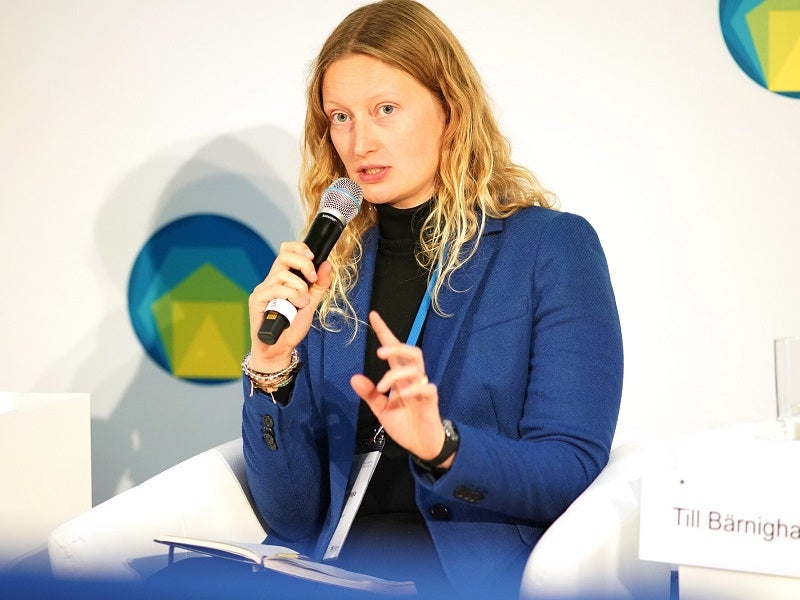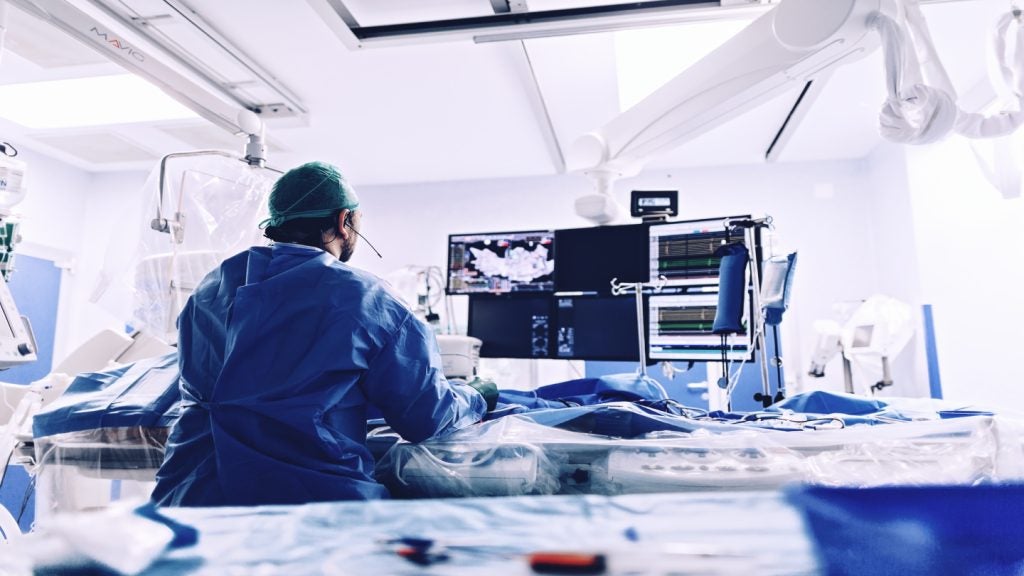
AI-powered healthcare in resource-limited settings
Ada Health is a medical artificial intelligence (AI) platform which allows patients to receive a series of suggested diagnoses for their symptoms. Just input what’s troubling you, and you’re taken through a virtual consultation with the algorithm, which asks a series of follow-up questions before providing some potential diagnoses a patient can bring with them to their clinician.
Speaking at the World Health Summit (WHS) in Berlin, Ada Global Health Initiative managing director Hila Azadzoy said: “We’ve built a very sophisticated medical reasoning engine that is combining and linking thousands of symptoms with thousands of conditions, from communicable to non-communicable to rare disease, bringing that all together to have a system in place that can compute common and complex symptom constellations within minutes.”
Ada aims to free up clinicians and empower patients, and is having a strong impact in low- and lower-middle income countries. One third of the app’s user-base is concentrated in these resource-limited settings, where quality healthcare can be out-of-reach for many patients.
Azadzoy said: “Over four billion people lack access to even basic primary healthcare services, and that’s due to a massive shortage of healthcare workers all around the world as well as geographical and huge financial barriers. The ones that have access may not necessarily experience efficiency or any quality guaranteed, with countless hours spent in the waiting room to then, such as in Bangladesh, have an average consultation time of 45 seconds.
“In circumstances like there, where access is constrained and misdiagnosis can happen very easily, we fundamentally believe that AI and mobile technology can make a huge difference. Traditional models of healthcare delivery will not solve this huge global challenge.”
Ada’s medical reasoning engine can process a patient’s symptoms and provide a potential cause for their condition within minutes, which they can present to their physician for formal diagnosis, saving a significant amount of time.
How well do you really know your competitors?
Access the most comprehensive Company Profiles on the market, powered by GlobalData. Save hours of research. Gain competitive edge.

Thank you!
Your download email will arrive shortly
Not ready to buy yet? Download a free sample
We are confident about the unique quality of our Company Profiles. However, we want you to make the most beneficial decision for your business, so we offer a free sample that you can download by submitting the below form
By GlobalDataA median of 45% of people in developing nations own smartphones, according to the Pew Research Center, peaking at highs of 60% in South Africa and Brazil to as low as 24% in India. To increase the reach of Ada’s technology, the company is looking into upskilling semi-skilled community health workers by equipping them with the technology, to help them diagnose and treat patients whose conditions would be otherwise beyond their reach.
The gamification of prevention
Researchers at the Berlin Institute of Health have developed two mobile apps, Smokerface and Sunface, designed to shock users into cutting down on smoking and minimise UV exposure.
Berlin Institute of Health chair for clinical translational sciences Christof von Kalle said: “These apps are gamification of prevention. They teach people what they are going to look like if they smoke X packs of cigarettes or expose themselves to X decades of sunlight.”
Simply snap a selfie and upload it to one of the apps, and they’ll use AI to show you a picture of what your face could look like after years neglecting your health. These aren’t perfect renderings – the ‘five-year’ predictions are arguably somewhat exaggerated – but as the algorithm animates the face to cough and grimace, it’s undeniably effective.
von Kalle said: “One of the most effective things you can do in healthcare today is spread this app with five people you know, the younger the better.”
The life-saving power of mobile technology
Poor families in Sub-Saharan Africa and other resource-limited regions often have no assured regular financial income, meaning traditional health insurance companies are rarely willing to cover the costs of their care when they all ill. This means out-of-pocket payments are the primary way of covering healthcare costs in these areas, even when these expenditures often exceed the budgets of most low-income households.
However, over the last ten years mobile phone ownership has more than doubled in low- and middle-income countries, with mobile payment services now acting as a common alternative to cash. Mobile money enables consumers to send, receive and store virtual money via their mobile devices.
This initially allowed digital insurance products to spring up as loyalty schemes between mobile money operators and their customers, which are still available at scale and easily verifiable.
These products were offered as free services to customers as long as they fulfilled certain requirements, such as using their mobile money wallet regularly or keeping a balance of a certain amount each month. This approach wasn’t sustainable in the long term but 84% of these products have now been replaced with plans, meaning the patient is able to pay with small instalments, or upfront if they can cover it.
Mobile operator trade association GSMA’s head of AgriTech and CleanTech Natalia Pshenichnaya said: “We’re talking about private sector-led insurance available through digital channels at a large scale. We’re talking about half a million people being insured just through their mobile money provider in Bangladesh.”
Globally, around 1.7 billion people lack access to safe, reliable and convenient financial services, but 31 emerging markets have seen an increase in their financial inclusion rates through mobile money use.
“I’ll give an example from Pakistan,” Pshenichnaya said. “There are services running between a major mobile operator and mobile money provider called Jazz. All the premium payments are done via mobile money, which Jazz is interested in doing because of increasing adoption of the mobile money wallet. So customers pay $9 a year, and they get access to hospital admissions cover, intensive care and accidents.”




